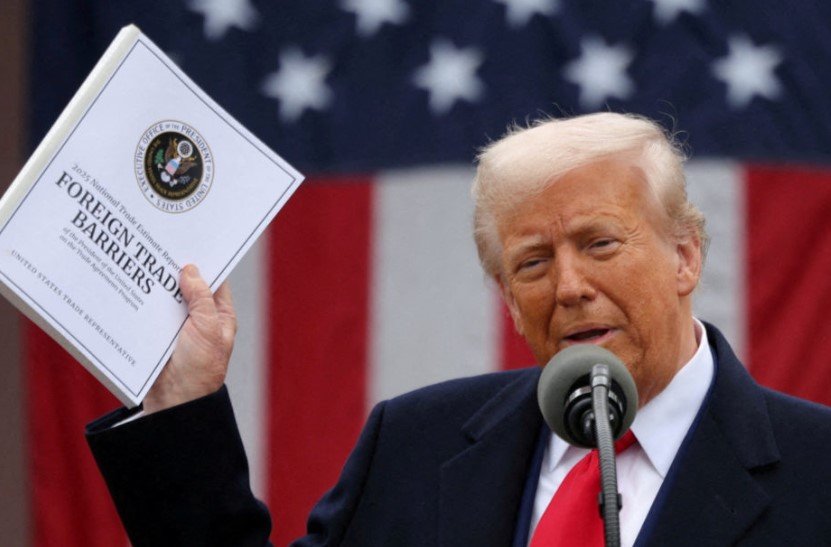Fresh round of tariffs to hit by August 1, as White House pushes “tailor-made trade plans” across globe
Donald Trump’s White House is gearing up for another dramatic trade maneuver. On Wednesday morning, the U.S. President is expected to release letters detailing a new batch of tariff hikes—this time aimed at at least seven more countries. The move, which follows Monday’s warning to 14 nations, is part of a broader escalation in Trump’s tariff-first trade policy, with rates expected to jump to as high as 40% by August 1.
The letters, described by aides as firm and non-negotiable, are expected to rattle already-fragile trade relationships. Countries affected won’t just receive a heads-up—they’ll be served with a deadline and a warning: play ball, or pay more.
Wednesday’s Letters Will Build on a Week of Economic Shockwaves
Trump’s Truth Social announcement came in classic form—brief, forceful, and full of intent. He wrote: “We will be releasing a minimum of 7 Countries having to do with trade, tomorrow morning, with an additional number of Countries being released in the afternoon.”
That’s not fluff. Earlier this week, 14 countries were already slapped with a similar notice.
Each letter outlines specific tariff rates—ranging from 25% to 40%—set to kick in by August 1 if trade agreements aren’t finalized. The White House insists these are “reciprocal” measures designed to correct what Trump’s team calls “longstanding abuses.”
One official put it bluntly: “These letters are the deal. There are no backchannels anymore.”

Behind the Scenes: Trump’s Team Is Calling the Shots—Literally
The most eyebrow-raising revelation? Trump is apparently setting the rates himself.
Press secretary Karoline Leavitt didn’t mince words: “President Trump is setting the rates himself, creating tailor-made trade plans for each and every country on this planet.”
That line sparked a flurry of responses across Washington and international trade circles. Some call it bold. Others say it’s chaotic. But either way, it’s clear who’s in the driver’s seat.
And it’s not the USTR.
White House insiders say Trump’s hands-on approach is part of a broader return to his 2018–2019 trade war instincts, when China, the EU, and even Canada were slapped with surprise tariffs.
This time, however, the list is longer, the rhetoric sharper, and the deadlines tighter.
What We Know About the Seven Targets—And What’s Still Guesswork
The administration has not publicly named the countries in this next round. That hasn’t stopped the speculation.
Based on trade imbalances and past tensions, analysts believe the following are strong contenders:
-
Mexico
-
Vietnam
-
Indonesia
-
Thailand
-
South Africa
-
Turkey
-
Brazil
All seven have sizable trade surpluses with the U.S., and some, like Vietnam and Mexico, have quietly grown their exports to fill the China gap during the earlier rounds of tariff escalation.
But nothing’s confirmed until the letters drop.
Some nations are bracing already. A Vietnamese diplomat reportedly described the White House posture as “combative, not cooperative,” adding that backchannel talks had stalled last month.
Here’s How the Tariff Game Is Stacking Up So Far
Monday’s batch of letters included stern language, according to people who saw drafts. They warn that any countermeasures—like retaliatory tariffs—could trigger “harsher and broader” penalties from the U.S.
A look at Monday’s tariff targets shows the global reach of Trump’s push:
| Country | Sector Most Affected | Proposed Tariff Rate | Prior Trade Talks? |
|---|---|---|---|
| South Korea | Steel & Electronics | 25%–30% | Ongoing |
| India | Textiles & Pharma | 30% | Suspended |
| Germany | Autos | 35% | No |
| Philippines | Electronics | 25% | Informal only |
| Malaysia | Palm oil | 40% | No |
| Argentina | Beef | 25% | Ongoing |
| Nigeria | Oil | 30% | No |
One senior administration official said the letters were “deliberately aggressive” to force faster concessions.
Political Timing or Policy Gamble?
There’s no avoiding the election-year overtones.
With the 2026 midterms looming and Trump’s base fired up over economic nationalism, this week’s tariff salvo plays to his core messaging. Jobs, fair trade, and “America First.”
Still, some economists warn the timing could backfire.
“Global inflation is sticky, and tariffs usually get passed down to consumers,” said Jake Rosenthal, senior fellow at Brookings. “If prices rise at home, the administration may be forced to explain how these tariffs help the average voter.”
That said, Trump’s calculation may be less about short-term pricing and more about the optics of confrontation.
And it’s working. His base sees it as strength. His critics call it reckless. But either way, everyone’s watching.
Foreign Response So Far: Silence, Shrugs, and Quiet Panic
Most affected countries have remained tight-lipped. But some diplomats are fuming behind closed doors.
According to European officials, a quiet flurry of calls has gone out to Washington—most unanswered. A German trade minister reportedly described the latest policy turn as “autocratic economics.”
One Asian official, speaking anonymously, called the White House letters “a monologue, not a negotiation.”
So far, there’s been no coordinated response, though the WTO is expected to convene a closed-door session later this week to assess the impact of unilateral tariff notifications that bypass negotiation.
Still, with the letters not even published yet, much of the world is holding its breath.
